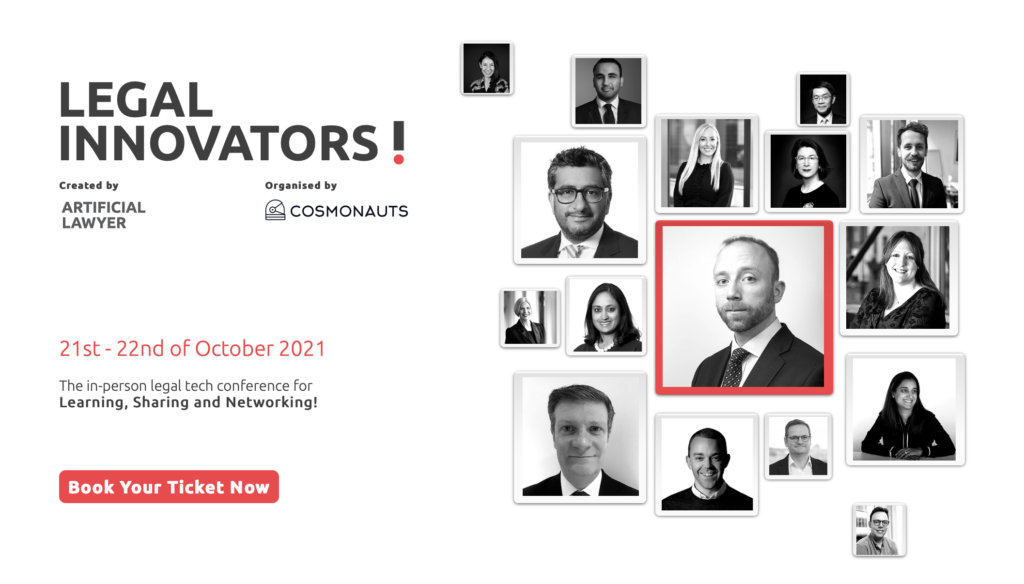
Stéphanie Hamon left Barclays in 2019 to join Norton Rose Fulbright’s Transform group, where she is Head of the Legal Operations Consulting arm. One of the first things she told Artificial Lawyer in our interview was: ‘I’ve spent 20 years in the legal sector, but I’m not a lawyer.’
And that no doubt – along with stints at Linklaters, King & Wood Mallesons, and Clifford Chance – has given her an invaluable perspective.
NRF Transform covers a broad range of inputs and outputs, from improving legal workflows and processes, to supporting change internally, to advising clients on innovation and legal ops projects. Hamon describes it as ‘a startup inside a law firm’.
But, as to her part of it, the core is ‘looking at processes and tech’ inside inhouse teams. But this is all grounded in something very down to Earth: ‘What do clients actually want?‘ she stated – and that indeed seems to be the right place to start.
Moving onwards, Hamon noted that the inhouse world is evolving, it ‘is moving from the narrative about being a cost centre, to legal as an integral driver of the strategy of the organisation’.
‘When you have the data, dashboards, and have KPIs, then you can articulate the value of the inhouse team using the language of the business,’ she added.
Again she returns back to basics. In a nutshell this is all about ‘making sure the right work is done in the right place at the right price‘, Hamon summed up.
‘What needs to be external, what needs to have law firms as part of it, what needs ALSPs and the input of tech companies? How do we triage this?’ she explained.
In effect her work is that of bringing a filter to the work of the inhouse team and then helping them with the processes and data-finding to articulate and improve what they are doing. One could say they are teaching a new language to someone, and that language contains the means for self-expression and the creation of meaningful concepts.
And on that point about language: ‘The most interesting element here is using tech to gather data to make informed decisions.’ I.e. data about work, and about the contents of that work, parsed into dashboards becomes a means of expression for the business’s legal arm that it didn’t have before.
One example she gave is of a Japanese client in the energy sector that was a large company, but only had about 20 inhouse lawyers.
‘They were going through a lot of growth and needed to cater for that. We initially talked to them about helping with resourcing, but it soon became clear that there was no data with which to work out what they were doing.’
I.e. you can’t really offer help in a structured way to an inhouse team if it’s unclear what that team even does all day. How would you know where you can add value? Where are you reducing duplication of effort, or sending work to a better-positioned person, or doing things in a better way in general?
So, they worked on unpicking things and helped them develop the data they needed. Part of that was decisions about a new tech stack and choosing tools to produce that data.
‘Now, at this point we had to do a lot of education as they had no taxonomy to describe the work they did, and there were many different experiences across the group,’ she added.
‘Eventually we found that 87% of the team’s work revolved around handling their commercial contracts, but they had no CLM. There wasn’t even a DMS,’ Hamon noted.
She added that mixed in with all those commercial contracts were a lot of NDAs. But, the contracts were generally never standardised, even if they often covered the same things. So, doc automation was impossible until that was sorted out.
It was a major job. But, on the flipside ‘it showed that the possibility for improvement was enormous’.
Ultimately this is all about change management, but as Hamon has seen, sometimes there are not even the most foundational building blocks in an inhouse team to begin that process. And those then have to be formed first from data, and then a language can be developed to describe what is happening, and finally then it can be used to articulate what you want to do.
So, overall, a positive story, but one that underlines the sheer scale of the barriers inside the inhouse world. But, Hamon, and many others across the legal sector, are working hard to help here.
—
If you found this subject of interest, then come along to Legal Innovators in London on October 21 and 22, where this and many other connected areas will be explored. Day One will focus on law firms and legal providers, and Day Two will focus on the inhouse world.
